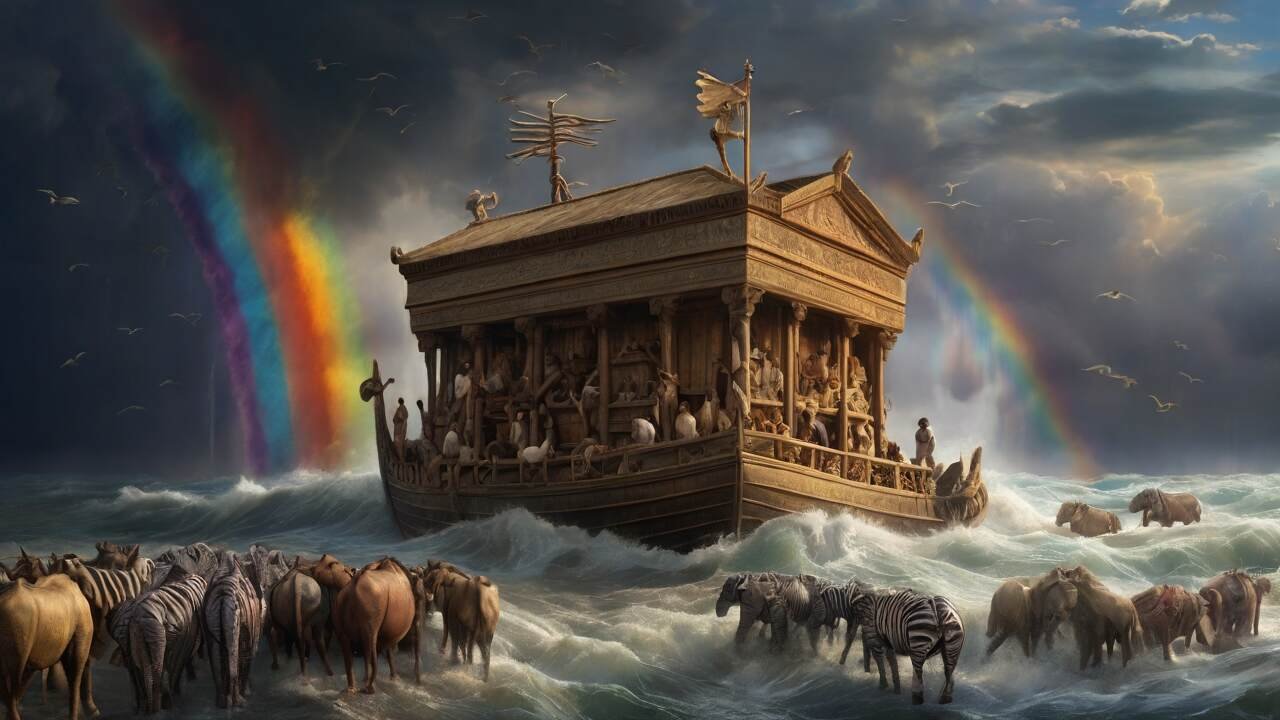Throughout history, angels have been revered as celestial beings, messengers of the divine, and symbols of God’s eternal presence. These heavenly guardians have captivated the human imagination, inspiring artists, theologians, and believers alike to explore the deeper significance of their sacred iconography and theological interpretations. From the winged figures adorning ancient cathedrals to the angelic hierarchies described in religious texts, angels have long been a central motif in the tapestry of religious symbolism.
Key Takeaways
- Angels are spiritual beings from the heavenly realm who play a vital role in the biblical narrative and God’s plan for humanity.
- They are often depicted as winged figures and serve as messengers, protectors, and guides in religious contexts.
- The symbolism associated with angels reflects the divine presence and the interconnectedness between the earthly and heavenly realms.
- Understanding the theological significance of angels can deepen one’s faith and appreciation for the wonder of God’s creation.
- Angelic representations in sacred iconography and art serve as visual reminders of the spiritual world and its influence on the mortal realm.
Introduction
Angels have long been a captivating subject in religious art and iconography, with their celestial depictions capturing the imagination of artists and believers alike. From the ornate halos and flowing robes of renaissance angelic figures to the fierce, winged guardians of medieval cathedrals, the historical representations of these divine messengers showcase the evolving cultural and theological interpretations of their nature and purpose.
The word “angel” itself derives from the Greek term “ángelos,” meaning “messenger.” This linguistic origin reflects the traditional role of angels as intermediaries between the divine realm and the mortal world, tasked with conveying the will of God to humanity. This essential function has been a driving force behind the historical angel depictions found in religious art and angelic iconography throughout the centuries.
Winged Wonders: The Evolution of Angelic Imagery
One of the most recognizable features of angels in celestial representations is their distinctive winged appearance. This symbolic attribute can be traced back to ancient Mesopotamian and Egyptian deities, where winged figures were often associated with divine power and the ability to move between the earthly and spiritual realms. As religious art and angelic iconography evolved, the winged motif became increasingly prevalent in depictions of angels, solidifying their status as heavenly beings capable of transcending the physical world.
| Period | Angelic Depiction | Artistic Characteristics |
|---|---|---|
| Early Christian | Simple, youthful figures | Robed in white, often without wings |
| Byzantine | Regal, authoritative angels | Ornate halos, elaborate robes, and prominent wings |
| Renaissance | Graceful, ethereal angels | Soft, naturalistic features, delicate wings, and gentle expressions |
| Baroque | Dramatic, powerful angels | Dynamic poses, dramatic lighting, and a sense of movement |
The evolution of angelic iconography in religious art not only reflects the changing artistic styles and cultural perspectives but also the deeper theological understandings of the role and nature of these celestial beings. From the serene, youthful depictions of early Christianity to the majestic, awe-inspiring figures of the Baroque era, the historical angel depictions continue to captivate and inspire viewers, serving as a visual testament to the enduring fascination with the divine realm.
Explore the symbolism associated with angels in religious contexts
Angels, in the context of various faith traditions, are often depicted as benevolent celestial beings that serve as intermediaries between the divine and humanity. These divine messengers play a significant role in the symbolic language and narratives of many religions, from Abrahamic faiths like Judaism, Christianity, and Islam, to Eastern belief systems such as Hinduism and Buddhism.
One of the primary symbolism of angels is their role as protectors, guides, and servants of the divine. They are believed to carry out the will of God or the divine forces, delivering messages, offering counsel, and acting as guardians for those who seek spiritual enlightenment or divine intervention.
The religious angel symbolism is often expressed through detailed angelic hierarchies and the veneration of specific angel figures, such as Gabriel, Michael, and Raphael in Abrahamic faiths. These named angels are frequently mentioned in apocalyptic literature and visions of the heavenly realm, further emphasizing their importance as divine messengers and intermediaries between the mortal and the sacred.
“Angels are the messengers of God, acting as intermediaries between the divine and human realms, carrying out God’s will and providing guidance to those who seek it.”
Across a wide range of religious contexts, the angelic presence is often associated with protection, wisdom, and spiritual enlightenment. The symbolism of angels serves to reinforce the belief that the divine is ever-present, watching over and guiding the faithful on their journeys of faith and self-discovery.
By exploring the symbolism of angels in various religious contexts, we can gain a deeper understanding of the role these celestial beings play in the spiritual lives of believers. Their enduring presence in the religious narratives and iconography of diverse faith traditions underscores the universal human need for divine guidance, protection, and a connection to the sacred.
Angels in Christianity
Angels hold a prominent place in Christian theology and belief. In Christianity, angels are understood as spiritual beings who stand by God in heaven, but are strictly to be distinguished from God (YHWH) and are subordinate to Him. The Bible refers to different types of angels, each with their own distinct roles and responsibilities within the divine hierarchy.
Angelic Hierarchy
The Christian angelology, or study of angels, describes a complex celestial hierarchy. At the top of this hierarchy are the archangels, such as Michael, Gabriel, and Raphael, who are believed to engage in spiritual warfare and deliver important messages from God. These archangels are considered the highest-ranking angels and are often depicted in Christian art and iconography.
Below the archangels, the Bible mentions other classes of angels, including seraphim, cherubim, thrones, dominions, virtues, powers, and principalities. Each of these angelic orders is thought to have specific duties and functions within the divine order.
One of the most widely recognized and beloved angels in Christianity is the guardian angel, believed to be assigned to protect and guide individual human beings throughout their lives. The concept of guardian angels provides comfort and reassurance to many Christians, who take solace in the idea of a celestial being watching over them.
“For he will command his angels concerning you to guard you in all your ways.” – Psalm 91:11
The rich tapestry of angels in Christianity, from the powerful archangels to the ever-present guardian angels, reflects the deep-rooted belief in the active involvement of the divine in human affairs. This Christian angelology continues to capture the imagination of believers and inspire their faith.

Conclusion
The significance of angels in religious traditions cannot be overstated. As symbols of the divine presence and messengers of the sacred, these celestial beings hold a profound and multifaceted role in the human experience of the transcendent. From the angelic hierarchies of Christianity to the guardian spirits of other faiths, the depiction of angels in art, literature, and theology reflects the deep reverence and awe with which they are regarded.
Exploring the symbolism and roles associated with angels provides valuable insights into the ways in which the divine interacts with the worldly. As divine messengers, angels serve as intermediaries between the heavenly and earthly realms, conveying the will and wisdom of the sacred. As spiritual guardians, they offer protection and guidance, representing the transcendent power and majesty of the divine.
Ultimately, the study of angels and their significance in religion offers a glimpse into the human desire to connect with the divine and to understand the mysteries of the sacred. Through the symbolic representation of angels, we are invited to contemplate the nature of the divine, the relationship between the spiritual and material worlds, and the profound ways in which the sacred manifests in our lives.
FAQ
What is the significance of angels in religious contexts?
Angels are spiritual beings from a heavenly realm who aid us in our journey into the life of Christ. They are an integral part of the Biblical narrative and play an important role in God’s unfolding plan throughout the Scriptures. Angels are beings who are being sent from heaven to advance the cause of Christ and God’s desire to save, redeem, and restore the entire world. Angels are a signpost that points to the greater reality of Christ and His kingdom. Any valuable angelic experience will help us grow in our faith and wonder of God.
How are angels typically depicted in art and literature?
Angels are often identified with bird wings, halos, and divine light in art. They are usually shaped like humans of extraordinary beauty, though they can also be portrayed in a frightening, inhuman manner. The word “angel” arrives in modern English from Old English engel and the Old French angele, both of which derive from Late Latin angelus, which in turn was borrowed from Late Greek ángelos (literally “messenger”).
What is the role of angels in Abrahamic religions?
In Abrahamic religious traditions (such as Judaism, Christianity, and Islam) and some sects of other belief-systems like Hinduism and Buddhism, angels are often depicted as benevolent celestial intermediaries between God and humanity. They serve as protectors, guides, and servants of God, carrying out His will and delivering messages from the divine. Angelic hierarchies and specific angel names (such as Gabriel or Michael) are important in many religious contexts, as angels play a significant role in apocalyptic literature and visions of the heavenly realm.
How are angels understood in Christianity?
In Christianity, angels are understood as spiritual beings who stand by God in heaven but are strictly to be distinguished from God (YHWH) and are subordinate to Him. The Bible refers to different types of angels, including seraphim, cherubim, thrones, dominions, virtues, powers, and principalities. The archangels, such as Michael, Gabriel, and Raphael, are the most well-known and are believed to engage in spiritual warfare and deliver messages from God. Guardian angels are also a common belief, as angels are assigned to protect and guide individual humans.








